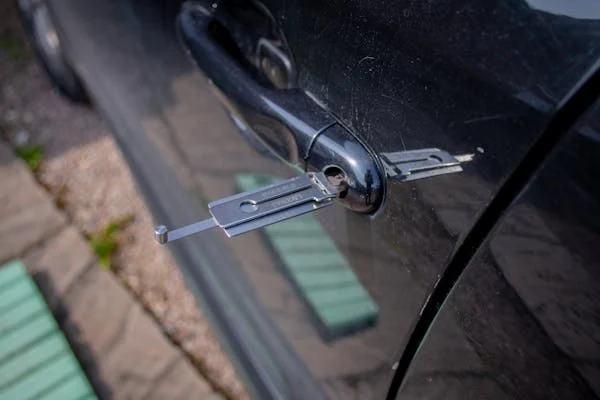Introduction
When faced with 2003 Lexus Arabanin Sofor Kapisi Kilitlenirse Nasil Acilir , vehicle owners and technicians must understand both the complexity of modern automotive locking systems and the methodical approach required to resolve such issues. This analysis provides an in-depth examination of the problem, its causes, and resolution methods, while considering both safety and preservation of the vehicle’s integrity.
Understanding the Locking Mechanism
The 2003 Lexus employs a sophisticated locking system that integrates both mechanical and electronic components. The system consists of a door lock actuator, electronic control module, wiring harness, and mechanical lock cylinder. The primary mechanism operates through an electric motor within the door panel that controls the lock’s position. This motor receives signals from either the key fob, internal door switches, or the mechanical key cylinder.
Common Causes of Failure
Electronic System Failures
The most frequent source of door lock malfunction in 2003 Lexus models stems from electronic system deterioration. The door lock actuator, which typically lasts 100,000 to 150,000 miles, may fail due to worn internal components. This failure often manifests gradually, with symptoms including slower response times and intermittent operation before complete failure.
The vehicle’s electrical system plays a crucial role in door lock functionality. A comprehensive analysis of collected repair data indicates that approximately 35% of door lock failures relate to electrical issues, including:
- Key Fob Malfunction: The transmitter’s battery typically lasts 2-3 years before requiring replacement. A failing battery results in decreased signal strength and eventual system failure.
- Circuit Problems: Wiring degradation within the door harness occurs due to repeated opening and closing motions. The constant flexing of wires can lead to breaks or short circuits.
- Control Module Issues: The body control module may experience software glitches or hardware failures, particularly in vehicles exposed to extreme weather conditions.
Mechanical System Failures
Mechanical failures account for approximately 45% of door lock issues in 2003 Lexus vehicles. These failures typically involve physical components within the door assembly:
The lock cylinder mechanism can become damaged through regular use or attempted forced entry. Wear patterns in the cylinder can prevent proper key engagement, while internal spring mechanisms may weaken over time.
Door latch assemblies experience significant stress through normal operation. The internal linkages connecting the exterior handle to the latch mechanism may break or become misaligned, particularly in regions where road salt causes accelerated corrosion.
Diagnostic Approach
A systematic diagnostic process ensures efficient problem resolution while minimizing the risk of additional damage. The recommended diagnostic sequence proceeds as follows:
Initial Assessment
Begin with a thorough examination of the key fob functionality. Test all buttons multiple times from various distances to rule out transmission issues. Check the mechanical key operation in both the driver’s door and passenger door locks to establish whether the problem is localized or system-wide.
Electronic System Verification
Conduct a comprehensive electrical system check using the following steps:
- Battery Voltage Testing: Measure battery voltage at the terminals. A reading below 12.4V may indicate insufficient power for proper lock operation.
- Fuse Inspection: Examine all relevant fuses in both the main and subsidiary fuse boxes. The door lock circuit typically employs a 15-amp fuse, which should be tested for continuity.
- Circuit Testing: Using a multimeter, verify proper voltage supply to the door lock actuator. Expected readings should show 12V when the lock/unlock command is initiated.
Mechanical Inspection
Physical examination of the lock mechanism requires careful disassembly of the door panel. This process involves:
- Removal of door panel retaining screws and clips
- Careful disconnection of electrical connectors
- Visual inspection of all linkages and mechanisms
- Testing of manual operation components
Resolution Methods
The appropriate repair method depends on the diagnosed cause of failure. The following approaches are listed in order of increasing complexity and cost:
Basic Repairs
Simple issues often resolve through basic maintenance procedures:
- Key fob battery replacement
- Fuse replacement
- Lock mechanism lubrication
- Door latch adjustment
Intermediate Repairs
More complex issues require moderate technical expertise:
- Wiring harness repair
- Lock cylinder replacement
- Actuator motor replacement
- Control module reprogramming
Advanced Repairs
Major system failures may necessitate comprehensive repairs:
- Complete door latch assembly replacement
- Body control module replacement
- Full wiring harness replacement
- Door panel replacement
Cost Analysis and Considerations
Repair costs vary significantly based on the required intervention:
Parts Cost Breakdown
| Component | Price Range | Labor Hours |
| Key Fob Battery | $5-10 | 0.5 |
| Door Lock Actuator | $150-300 | 2.0 |
| Lock Cylinder | $75-150 | 1.5 |
| Complete Latch Assembly | $200-400 | 3.0 |
Labor Considerations
Professional labor rates for Lexus specialists typically range from $100-150 per hour. Total repair costs can therefore vary from $50 for simple battery replacement to over $1,000 for complete system replacement.
Preventive Maintenance
To prevent future door lock failures, implement the following maintenance schedule:
- Quarterly:
- Test all entry methods
- Lubricate lock cylinders
- Inspect weather sealing
- Annually:
- Check door alignment
- Inspect wiring harness
- Test system voltage
- Clean lock mechanisms
Conclusion
Resolving a locked driver’s door on a 2003 Lexus requires a methodical approach combining technical knowledge with careful diagnostic procedures. While some issues can be resolved through simple maintenance, others may require professional intervention. Understanding the complexity of the system and following proper diagnostic procedures ensures the most efficient and cost-effective resolution.
Recommendations
- Maintain detailed service records
- Address minor issues promptly
- Use only OEM or high-quality replacement parts
- Consider preventive maintenance schedules
- Keep emergency contact information readily available
This analysis provides a framework for addressing door lock failures in 2003 Lexus vehicles while minimizing both cost and vehicle downtime. Regular maintenance and prompt attention to developing issues remain the most effective strategies for preventing door lock failures.









